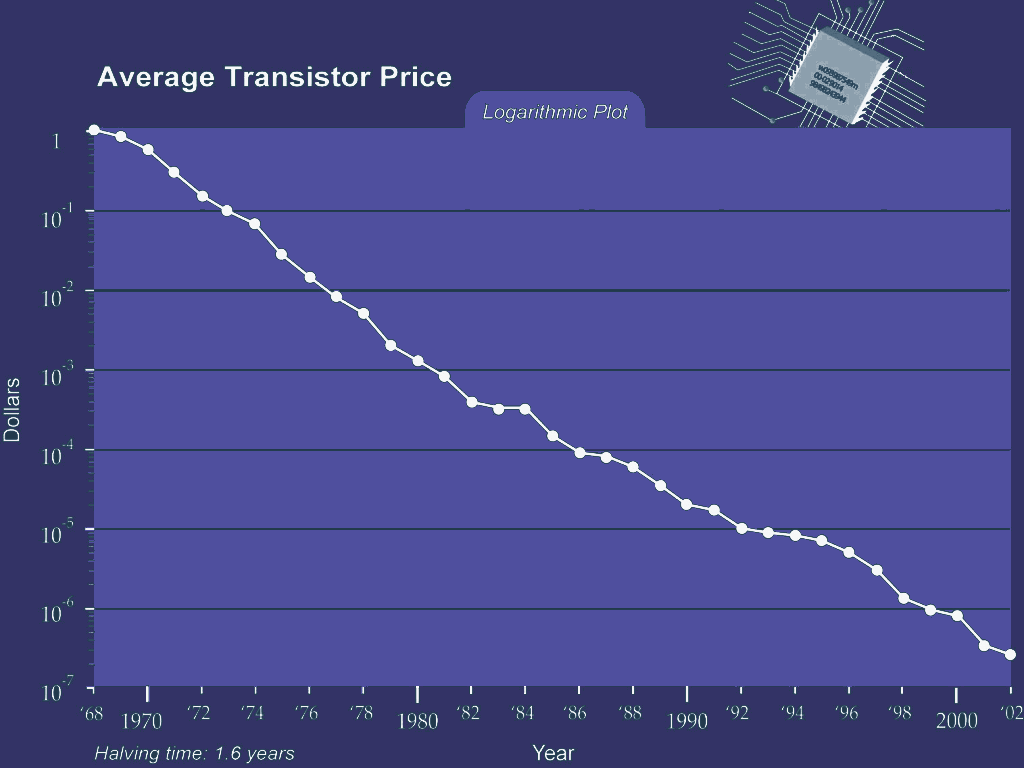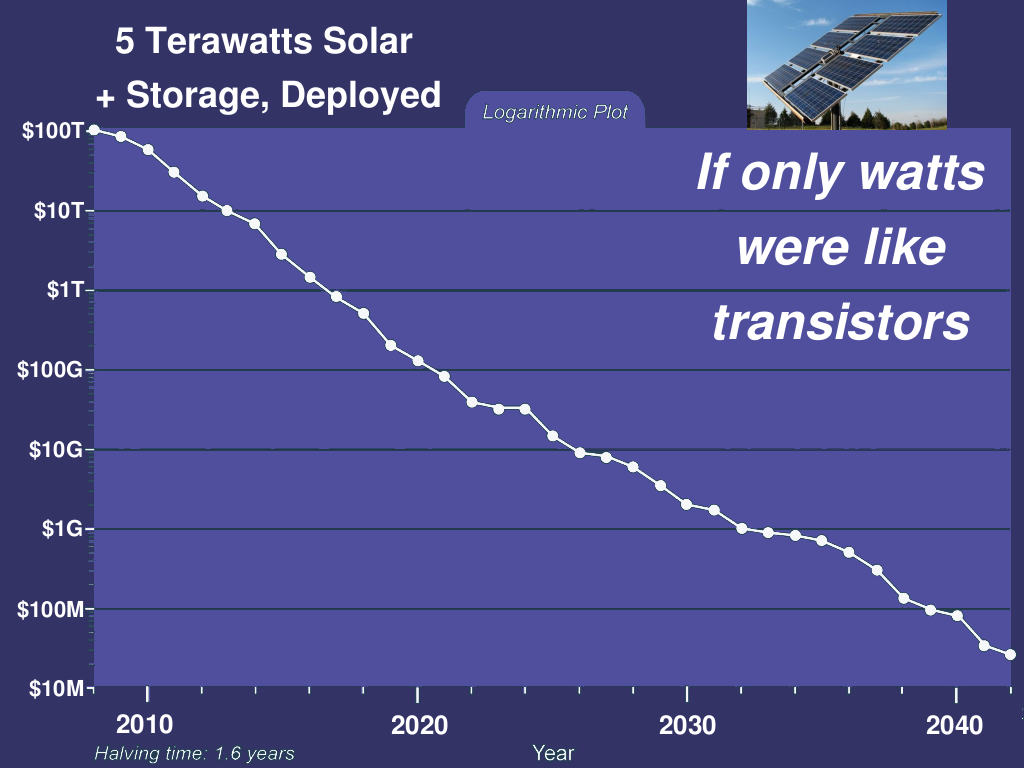Moore's Law and Energy
Moore's Law describes the incredible price drop of transistors on integrated circuits over the last 4 decades. Between 1970 and 2000, transistor prices dropped 6 orders of magnitude. This is made possible by photolithographic printing, automated processing, and an incredible amount of hard work by hundreds of thousands of scientists and engineers.
Here is the price of transistors on integrated circuits, following Moore's Law, from Hans Moravec's Singularity Institute:

This is the price of a transistor, on an integrated circuit die, in a package. Packaged integrated circuits cost about what they did decades ago; they just contain a million times more transistors at the same price. Packaging has not gotten a whole lot cheaper.
The Moravec curve is somewhat exaggerated - average transistor prices in the early 1970s were already dominated by MOS technologies, delivering thousands of transistors for tens of dollars or less. Bipolar devices were way more expensive, but did not contribute as many transistors to the sum that produces the average. So the curve starts out lower, and the actual slope is somewhat gentler, a price halving in two years rather than 1.6, but still quite dramatic. I will use the Moravec curve because it is pretty and even more dramatic; if that is overly optimistic, stretch times by 25%
Meanwhile, over the last few decades, the price of generating a watt of electricity has risen. What if, starting this year, the price dropped on the same Moore's Law trajectory?

In twenty years, we could replace our entire energy infrastructure for the cost of one medium-sized power plant. Of course, a power plant is a huge, increasingly complex package, built by hand and not printed optically, not subject to the economies of mass production. So power plant prices don't go down, but trend upwards with complexity instead.
This leads to the intriguing question, "what power production technologies can follow the Moore's law curve, that is, produce increasing amounts of energy without increasing the amount of packaging, perhaps using automated and optically printed techniques?
